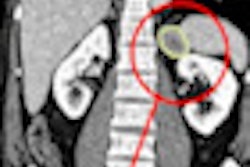Radiology reports that are most beneficial include clinical comments and are presented in a consistent, easy-to-read tabular format, according to a survey of physicians ordering radiology procedures from a community hospital in northwest England.
The findings come from the results of a questionnaire sent to 50% of the specialist physicians affiliated with the East Lancashire Hospitals NHS Trust in Blackburn about their preferences of how results of radiology procedures were reported. Results of the study were published in the April 2009 issue of Clinical Radiology (Vol. 64:4, pp. 386-394).
Researchers sent questionnaires to 100 randomly selected hospital consultants who ordered radiology exams between October 2007 and January 2008, asking recipients to rate the quality of radiology reports they were receiving and to identify the content elements a report should include.
The questionnaire also included samples of several different formats for two ultrasound reports, one containing normal findings and another with abnormal findings. The respondents were asked to rank each sample in order of preference, according to lead author and registrar (resident) in radiology Dr. Andrew A. O. Plumb.
Forty-nine physicians replied, representing specialists in cardiology, thoracic medicine, trauma, orthopedics, gastroenterology, anesthesia, intensive care, otorhinolaryngology, rheumatology, urology, and general and vascular surgery. They read an average of 15 radiology reports each week and, on average, ranked them as generally good both for content (7 out of 10 points) and clarity (6.7 out of 10 points).
In terms of desired content elements, assessments of exam quality and summaries or clinical comments on findings received the highest ratings (94% and 92%, respectively). The majority of respondents (59%) felt that merely stating that the exam was "normal" without additional commentary was inappropriate. The respondents preferred detailed reports to brief ones, as long as the comments were relevant to the clinical question being asked.
Two-thirds of the respondents requested that the clinical scenario, examination technique, and recommendations for further nonradiologic investigation be included. Forty-five percent did not find measurement of normal organs, estimated radiation dose, or type/name of contrast media used to be beneficial.
Physicians also wanted a listing of the organs that were examined, so that any ambiguity about whether an organ was examined and was normal, or was not examined, could be alleviated.
Although all but one respondent wanted radiologists to specify their recommendations for additional diagnostic imaging procedures, only 63% agreed that radiologists or staff should inform patients of this and make arrangements. Those who disagreed felt that this should be the responsibility of the referring specialist, who in their opinion would be best at determining if a patient was too frail to benefit from any potential treatment or to inform a patient of an unsuspected malignancy.
Tabular format reports listing the organs that could be examined, with space for commentary followed by a space for overall comments and recommendations, were preferred over freestanding prose report formats for both the sample "normal" and "abnormal" exams.
The results of this survey, as well as one surveying primary care physicians, which will be published in a forthcoming issue of the British Journal of Radiology, reinforce the need for consistent reporting, lead author Plumb told AuntMinnie.com. As a result of both surveys, more radiologists at East Lancashire Hospitals NHS Trust are providing specific answers to clinical questions, and Plumb hopes that this will become a routine practice for all.
The hospital is in the process of obtaining a new radiology information system, according to Plumb. He is hopeful that it will accommodate customized tabular reporting formats, and that if the RIS has this capability, the radiologists will agree to using a tabular reporting structure.
By Cynthia E. Keen
AuntMinnie.com staff writer
April 10, 2009
Related Reading
Radiology reporting terms can confuse pediatricians, April 3, 2009
Do unstructured reports fail to convey accurate brain MR info? January 14, 2009
Speech recognition and structured reporting brings advantages, drawbacks, May 12, 2008
Format no factor in report efficiency, September 8, 2005
Studies critique radiologists' reports in chest x-ray, knee MRI, April 19, 2005
Copyright © 2009 AuntMinnie.com


















